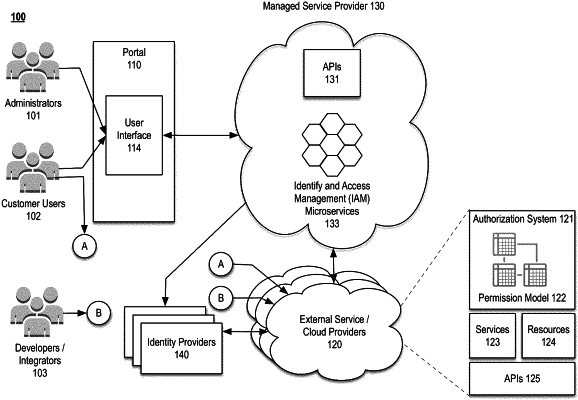| CPC H04L 63/0815 (2013.01) [H04L 41/22 (2013.01); H04L 41/28 (2013.01); H04L 63/101 (2013.01); H04L 63/20 (2013.01); H04L 67/02 (2013.01)] | 20 Claims |

|
1. A system comprising:
a processing resource; and
a non-transitory computer-readable medium comprising instructions executable on the processing resource to:
cause presentation of a user interface through which users of a managed service provider (MSP) are able to configure permissions for and access a plurality of resources of different services with respective different levels of Identity and Access Management (IAM) support;
provide a unified IAM control plane including a plurality of application programming interfaces (APIs) that support integration of the different services into the unified IAM control plane;
provide a centralized IAM service containing information regarding the permissions for the plurality of resources of the different services, the centralized IAM service accessible by the users through the user interface to authorize access of the plurality of resources of the different services based on the permissions;
integrate, using a first API of the plurality of APIs, a first service of the different services into the unified IAM control plane, the first service being without an IAM implementation and the integration of the first service using the first API causing the centralized IAM service to maintain access control information for a resource of the first service;
integrate, using a second API of the plurality of APIs, a second service of the different services into the unified IAM control plane, the second service comprising an authorization system that provides built-in IAM in the second service, the authorization system to authenticate a user identity and to provide access of a resource of the second service; and
maintain consistency between the centralized IAM service and the authorization system of the second service based on communicating a change event to synchronize a change in a permission between the centralized IAM service and the authorization system of the second service.
|